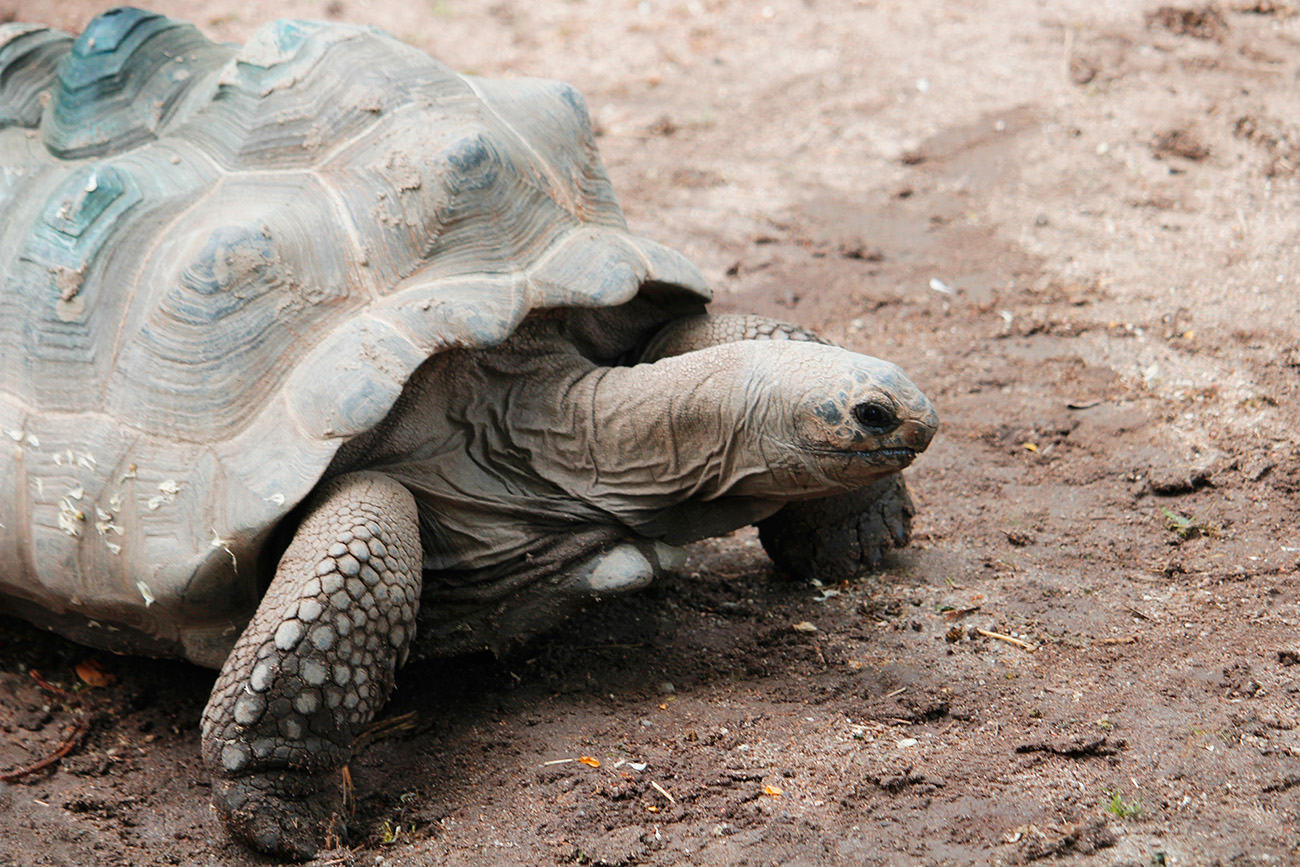Become a Zoollower, now with 3x2 for the first members. Find out here!

Seychelles or Aldabra tortoise





It is the largest tortoise after the giant tortoise of the Galapagos Islands (Geochelone nigra).
The dome-shaped carapace is dark gray or black. The limbs are very robust, which is essential to support the tremendous weight of the animal. The neck is disproportionately long, even for such a large animal, which is tremendously useful for reaching low branches of trees, up to almost a meter high from the ground.
This herbivorous turtle feeds on grass, leaves and woody stems, although it occasionally supplements its diet with invertebrates and carrion.
In mangrove forests they find shade and shelter. They can be seen both individually and in groups.
They are usually most active in the mornings, foraging and grazing.
They dig burrows under the ground or rest in pools of water or mud to keep cool during the hottest part of the day.
Although characteristically slow and cautious, they are capable of considerable speed, especially when threatened.
Sexual maturity is determined by size, not age; hence they are sexually mature when they reach half final size. Mating occurs between February and May. The female lays between 10 and 25 eggs.
There is a high rate of infertility of the eggs, about 60% are not fertilized. Incubation lasts 8 months. Hatching occurs between October and November.
Come to Zoo from
€28.50
€19.90